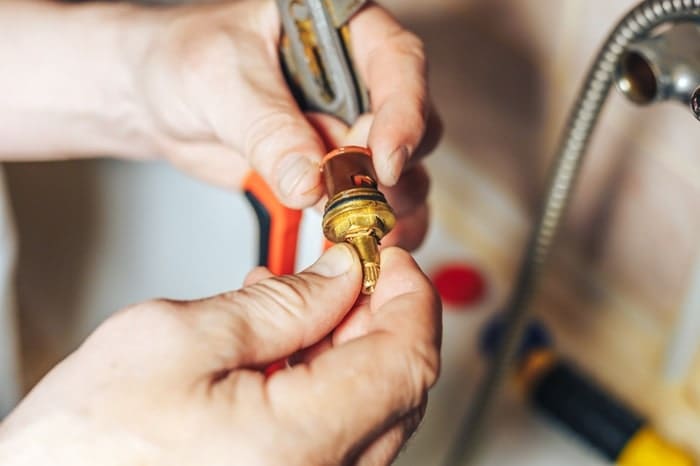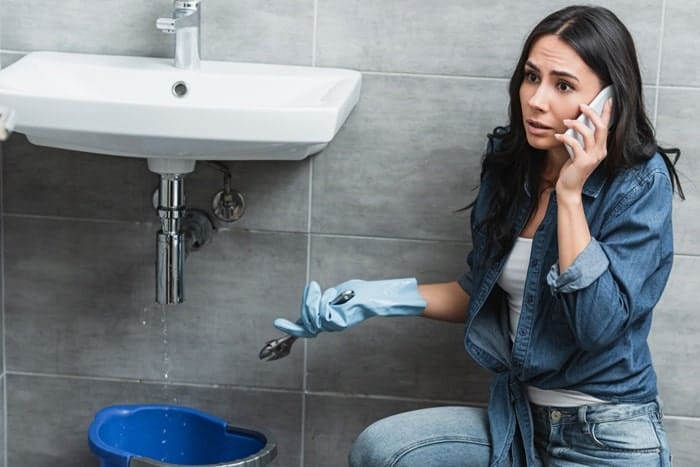A leaky faucet is a common household problem that can lead to wasted water and increased water bills. Fortunately, most leaky faucets can be fixed with some basic plumbing knowledge and a few tools. In this article, we will explore the common causes of leaky faucets and provide step-by-step instructions on how to fix them.
Common Causes of Leaky Faucets
- Worn-out washers or gaskets: Washers and gaskets are rubber seals that create a watertight fit between the faucet parts. Over time, they can wear out and start to leak.
- Loose or broken parts: Faucets have many small parts that work together to control the flow of water. If any of these parts become loose or broken, it can cause a leak.
- Water pressure: High water pressure can put extra strain on the faucet parts, causing them to leak.
- Corroded valve seat: The valve seat is the part of the faucet that the washer or gasket seals against. If the valve seat becomes corroded, it can prevent the washer from forming a watertight seal.
- Aging water faucet: As faucets age, they become more susceptible to various issues that can lead to leaks. It’s important to keep an eye on your faucet’s condition to avoid potential problems. Regular maintenance and, when necessary, replacing aging water faucets are key to preventing water wastage and maintaining a leak-free system.
How to Fix a Leaky Faucet
The first step in fixing a leaky faucet is to identify the source of the leak. Once you know where the leak is coming from, you can fix it by replacing the worn-out parts, tightening the loose parts, or adjusting the water pressure.
Fixing a Leaky Spout
If the leak is coming from the spout of the faucet, it is likely caused by a worn-out washer or gasket. To fix this, you will need to replace the washer or gasket.
To replace a washer or gasket:
- Turn off the water supply to the faucet.
- Remove the faucet handle.
- Remove the old washer or gasket.
- Clean the valve seat with a wire brush to remove any debris.
- Apply a thin layer of silicone grease to the new washer or gasket.
- Install the new washer or gasket.
- Reassemble the faucet and turn on the water supply.
Fixing a Leaky Handle
If the leak comes from the handle of the faucet, it is likely caused by a loose or broken part. To fix this, you will need to tighten the loose parts or replace the broken parts.
To tighten a loose faucet handle:
- Turn off the water supply to the faucet.
- Remove the faucet handle.
- Locate the screws that hold the handle in place.
- Tighten the screws with a screwdriver.
- Reassemble the faucet and turn on the water supply.
To replace a broken faucet handle:
- Turn off the water supply to the faucet.
- Remove the broken faucet handle.
- Purchase a replacement faucet handle that is compatible with your faucet.
- Install the new faucet handle according to the manufacturer’s instructions.
- Turn on the water supply and test the faucet for leaks.
Fixing a Leak from Underneath the Sink

If the leak comes from underneath the sink, it is likely caused by a loose or broken pipe connection. To fix this, you will need to tighten the loose connection or replace the broken pipe.
To tighten a loose pipe connection:
- Turn off the water supply to the faucet.
- Locate the loose pipe connection.
- Use a wrench to tighten the connection.
- Turn on the water supply and test the faucet for leaks.
To replace a broken pipe:
- Turn off the water supply to the faucet.
- Cut out the broken section of pipe.
- Install a new section of pipe using a pipe coupling.
- Turn on the water supply and test the faucet for leaks.
Adjusting the Water Pressure
If the leak is caused by high water pressure, you can adjust the water pressure regulator to reduce the pressure.
To adjust the water pressure regulator:
- Locate the water pressure regulator. It is usually located near the main water line coming into your home.
- Use an adjustable wrench to turn the pressure regulator counterclockwise to reduce the pressure.
- Turn on the water supply and test the faucet for leaks.
Preventing Leaky Faucets
There are a few things you can do to prevent leaky faucets:
- Regularly inspect your faucets for signs of wear and tear.
- Tighten any loose screws or connections.
- Replace any worn-out washers or gaskets.
- Adjust the water pressure regulator if necessary.
By following these tips, you can keep your faucets in good repair and prevent them from leaking.
Additional Tips
- Use a faucet repair kit. Faucet repair kits are available at most hardware stores and include the most common washers, gaskets, and other parts needed to fix a leaky faucet.
- Apply silicone grease to new washers and gaskets. Silicone grease will help to create a watertight seal and extend the life of the washers and gaskets.
- Be careful not to overtighten faucet parts. Overtightening can damage the parts and cause them to leak.
- Test the faucet for leaks after making any repairs. Turn on the water and check for any drips or leaks. If you find a leak, tighten the loose parts or replace the worn-out parts.
Conclusion
A leaky faucet is a common household problem. You can regain water usage control by identifying the root cause and following the appropriate steps to fix it.


